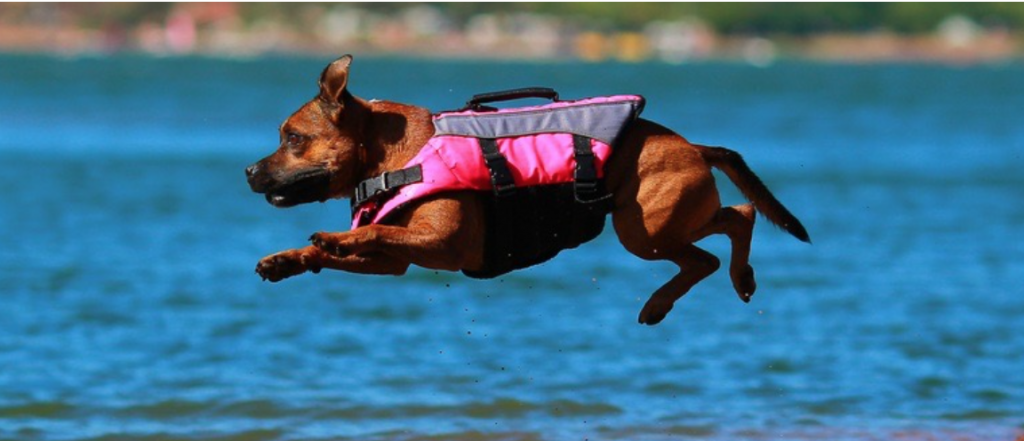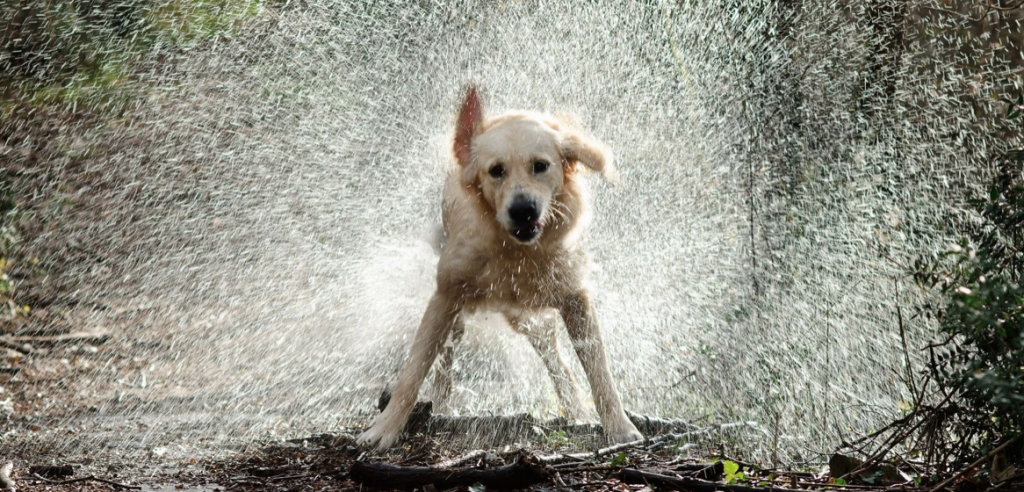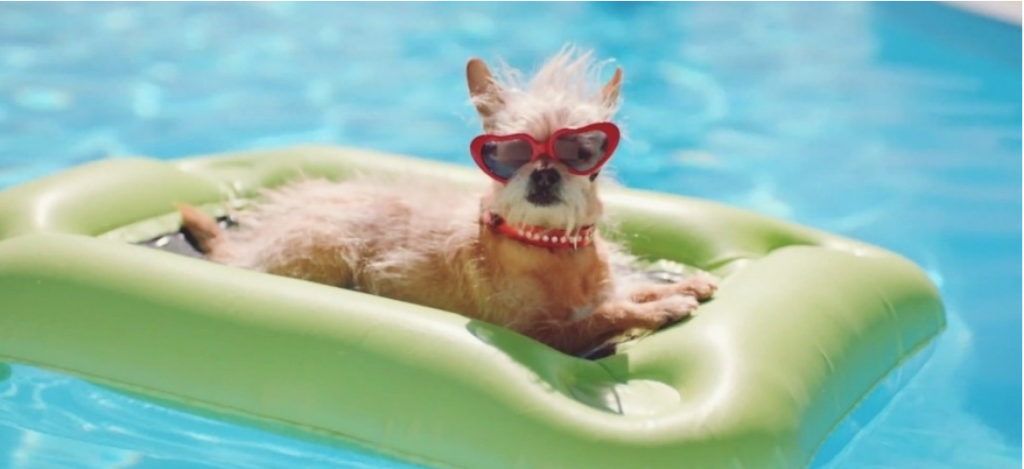Summertime is a great season to take adventures with your dogs. A lot of summer activities revolve around water. Swimming is a great form of exercise and an effective way to keep cool in the summer, both for you and your dog. Some dogs love swimming and splashing, but there are some associated risks that dog owners should be aware of.
First, you must have confidence in your dog’s swimming abilities. If it the first time they’ve tested the waters, make sure you stay close to them to help them out. If they do not want to get in the water, do not force them. A dog understands its own abilities better than we do. When they first start to paddle with their front paws, it can be helpful to lift up their back in and help them learn how to float. Staying in shallow waters is always safest when a dog is first learning to swim. Using a dog life jacket or some type of floatation device is never a bad idea, even for the most experienced puppy paddler.

Depending on where you and your dog are enjoying the water, there are certain concerns to keep watch for.
- Ponds and lakes are great places for your dog to swim, especially when boating or fishing, but can pose a threat to your dog. Be sure to watch out for added chemicals intended to kill algae, as well as a special type of algae called blue green algae. Both can be harmful to your dog’s skin, and depending on the level of exposure can become deadly.
- Pools are the most common swimming spot for you and your dog. While the risks are minimal in controlled waters such as a pool, make sure your dog is familiar with where the steps are to get out of the pool. It’s important they understand how to get out when they get tired. Also, be sure you rinse your dog off with the hose after romping around the pool. When cleaning and licking themselves, the chlorine on their skin can be harmful when ingested.
- Oceans are tons of fun, with unlimited playing room on the beach. The waves add a new level of fun for your dog as well. It’s important to stay with your dog while swimming in the ocean, making sure they don’t swim too far out. Dogs get tired quickly when swimming in the ocean, and it can be difficult for them to paddle back to shallow waters. Also, strong currents can pull your dog out deeper into the ocean, making it near impossible for them to get back to shore.
In all of these swimming settings, try and avoid your dog drinking too much water. These treated or salty waters can be dangerous if too much is ingested. Take some fresh water and a bowl for your dog to stay hydrated with when out on a swimming adventure. Even when swimming in fresh water, make sure your dog doesn’t drink an excessive amount of water, as it can potentially cause water intoxication.

Much like us, dogs who swim often can develop ear infections. Unlike us however, dogs don’t have the luxury of access to ear plugs. Because of this we have to be mindful of a dog spending too much time in the water. Dogs with floppy ears, such as Cocker Spaniels and Golden Retrievers are at a higher risk of ear infections. Because their ears fold over the ear canal, water is retained inside the ear, allowing bacteria and yeast to thrive. To avoid ear infections, its best to allow your dog to shake as much as necessary to help get water out of his ears. Sometimes that is not enough, and ear cleansers are needed to get rid of any forming infection. It’s important to never use a Q-tip to clean your dogs’ ears, as it can cause permanent damage to their ear drum.

Swimming with your pup can be tons of fun, but remember to keep a close eye on them. Many dogs love playing it the water, but it’s important to let them rest often, and to be mindful of their surroundings. Have a great summer and enjoy soaking up the sun with your dog this year!
Check out more ways to keep your dog cool in the summer heat.


